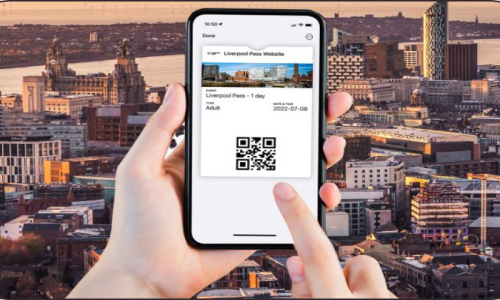Shopping in the UK is undergoing a quiet revolution. From asking a chatbot for advice to getting personalised outfit suggestions, artificial intelligence (AI) is making every step of your shopping journey smarter, faster, and more tailored to you. Let’s explore how AI and personalization are reshaping the way we shop and what this means for your next purchase.
AI-Driven Shopping Assistants: Your New Shopping Best Friend
Imagine having a personal shopper who knows your style, budget, and preferences better than your best friend. AI-driven shopping assistants like Amazon’s Rufus are doing exactly that. Launched in the UK in late 2024, Rufus helps users find products by answering questions like “What’s the best espresso machine under £200?” or “What do I need for a weekend camping trip?”.
These assistants use natural language processing to understand your needs and scan millions of products instantly. For example, Rufus can compare blender features or explain why a specific camera suits travel photography.
UK retailers like John Lewis are also using AI to simplify price matching. Their revamped Never Knowingly Undersold promise uses AI to track prices at 25 competitors (including Amazon and M&S) in real time, ensuring customers get the best deals without manual checks.
Personalized Product Recommendations: The End of Endless Scrolling
Gone are the days of sifting through irrelevant products. AI now analyses your browsing history, past purchases, and even social media activity to curate recommendations. For instance, ASOS uses machine learning to suggest outfits based on your style preferences. If you buy a lot of vintage dresses, its algorithm will prioritise similar items in your feed.
This personalization isn’t just convenient, it’s profitable. Retailers using AI-driven recommendations see up to 30% higher conversion rates, as shoppers find what they need faster.
Virtual Try-Ons: See It Before You Buy It
Buying clothes online can be risky, but virtual try-ons are reducing returns and boosting confidence. Brands like ASOS and Hugo Boss use augmented reality (AR) to let customers “try” clothes or accessories using their smartphone cameras. For example, ASOS’s “See My Fit” tool shows how a dress looks on different body types, while Hugo Boss’s AR glasses let you visualise sunglasses on your face.
This tech isn’t limited to fashion. Furniture retailers like John Lewis use AR to help customers see how a sofa fits in their living room, down to the exact measurements.
Smart Shopping with Voice Search: “Hey Alexa, Find Me a Coffee Maker”
Voice assistants like Alexa and Google Home are becoming shopping companions. In 2025, over 40% of UK households use voice search to shop, asking queries like:
- “Order more dishwasher tablets.”
- “Find a vegan recipe book under £15.”
AI processes these commands by analysing your purchase history and preferences. For example, if you often buy eco-friendly products, Alexa will prioritise sustainable brands. Retailers are optimising product descriptions for voice search, using conversational keywords like “durable” or “easy to clean” to stay relevant.

Frictionless Payments: Check Out in Seconds
AI is making payments faster and safer. Biometric authentication (like fingerprint or facial recognition) is replacing passwords, while systems like Amazon’s Just Walk Out let shoppers grab items and leave, with charges applied automatically.
Even traditional retailers are adopting “tap and go” systems. John Lewis’s app now allows in-store shoppers to scan items and pay via their phone, skipping queues entirely.
Pay Later (BNPL) Services: Flexibility at Your Fingertips
Buy Now, Pay Later (BNPL) services like Klarna and Clearpay are booming, with AI assessing creditworthiness in seconds. These tools analyse your spending habits and income to offer interest-free instalments. For instance, Klarna’s AI approves 95% of applications instantly, making it easier to budget for pricier items.
Case Study: How ASOS and John Lewis Are Leading the AI Revolution
ASOS: Styling the Future
ASOS uses AI to blend personalization with sustainability. Its Style Match tool lets users upload photos of outfits they like, and the algorithm finds similar items in stock. The brand also employs AI to reduce waste by predicting demand and optimising inventory, cutting overstock by 15% in 2024.
ASOS has become a trailblazer in AI adoption:
- AI Stylist: A chatbot that suggests outfits using generative AI.
- Fit Assistant: Uses body metrics to recommend sizes, cutting returns by 10%.
- Predictive Analytics: Forecasts trends to optimize inventory and reduce waste.
John Lewis: Price Matching Made Smarter
John Lewis’s AI-driven Never Knowingly Undersold promise, relaunched in 2024, tracks prices at 25 competitors in real time. If a customer finds a cheaper price elsewhere, John Lewis refunds the difference automatically. This system replaced manual checks (previously done with “pencils and spreadsheets”) and now covers online retailers like Amazon for the first time.
John Lewis focuses on blending online and in-store experiences:
- AR Home Visualizer: Lets customers preview furniture in their homes.
- Personalized Loyalty Rewards: Tailored offers based on shopping history.
These strategies have boosted customer satisfaction and sales, proving AI isn’t just a trend—it’s the future.
FAQs
1. Is my data safe with AI shopping tools?
Yes, retailers must follow strict UK data laws (GDPR). AI systems anonymise your data, meaning your personal details aren’t tied to shopping habits.
2. Can I opt out of personalised ads?
Absolutely. Most apps and websites let you disable personalised recommendations in settings.
3. Do virtual try-ons work for all body types?
Brands like ASOS are improving inclusivity by using diverse models and adjustable AR tools.
4. Are BNPL services risky?
If used responsibly, BNPL helps budget. However, always check repayment terms to avoid debt.
5. Will AI take over retail jobs?
AI handles repetitive tasks (like inventory checks), but human staff focus on customer service and creativity.
The Bottom Line
AI isn’t just changing shopping, it’s making it smarter. Whether it’s a chatbot helping you find the perfect gift or an AR tool visualising furniture in your home, these innovations save time, money, and hassle. As UK retailers like John Lewis and ASOS show, the future of shopping is personal, seamless, and exciting.
So next time you’re online, let AI do the heavy lifting. Your dream wardrobe, or kitchen remodel, might be just a click away.

























